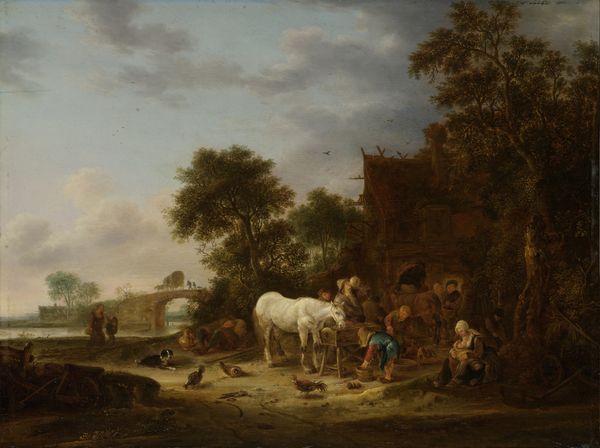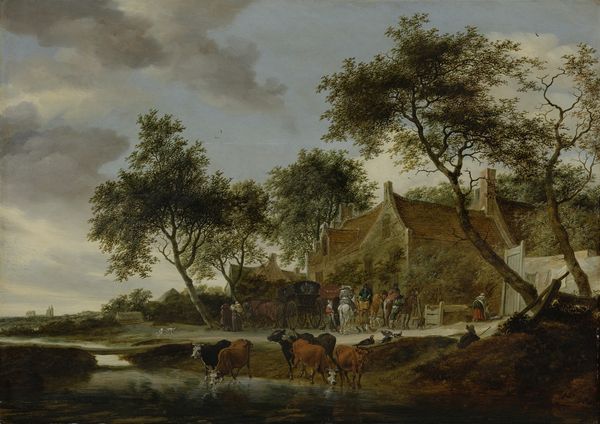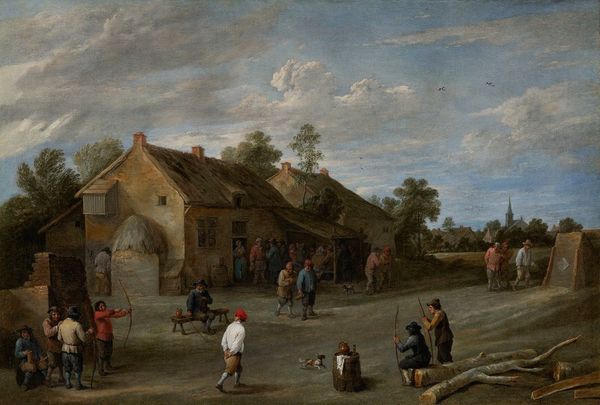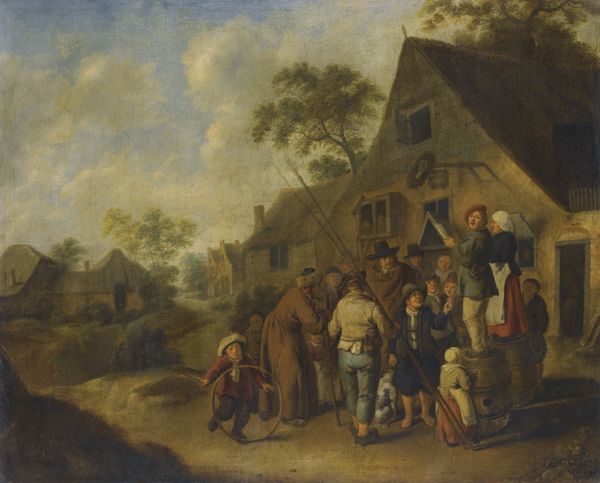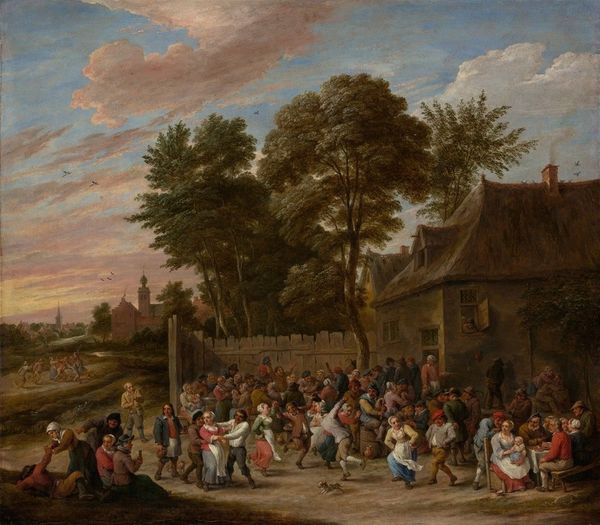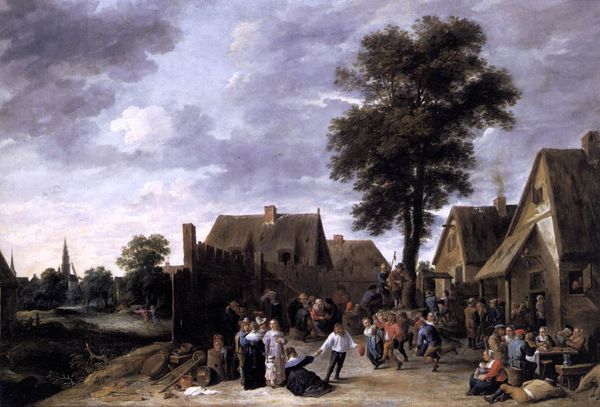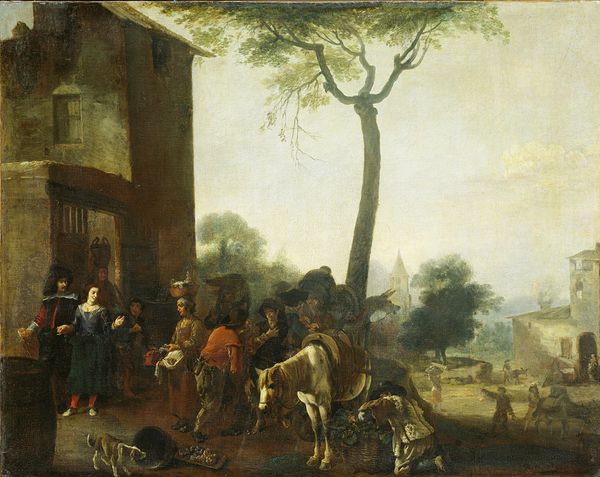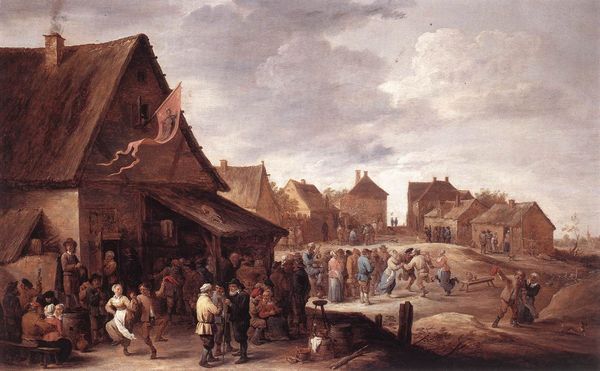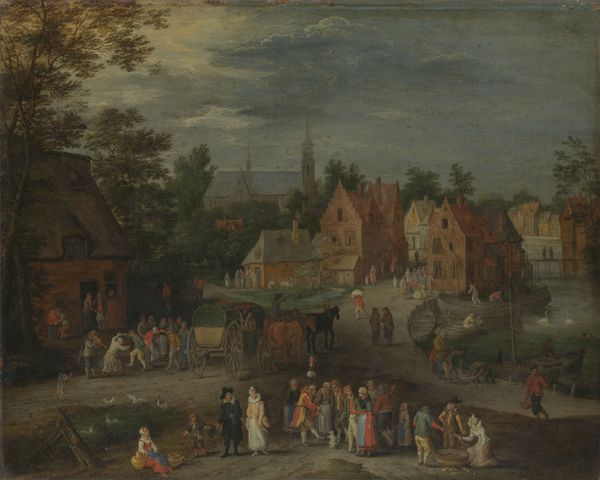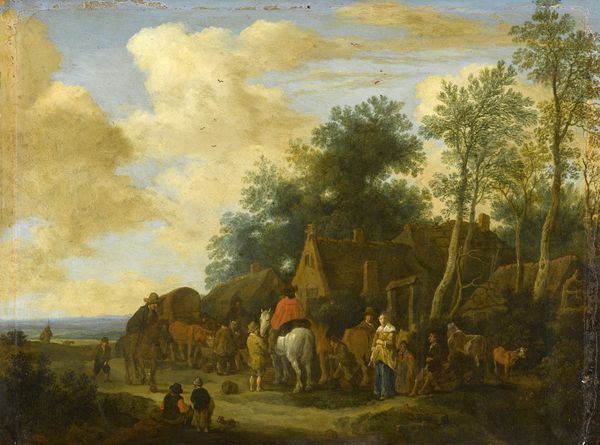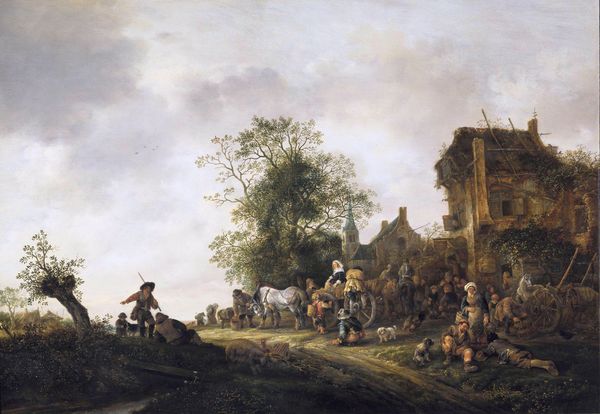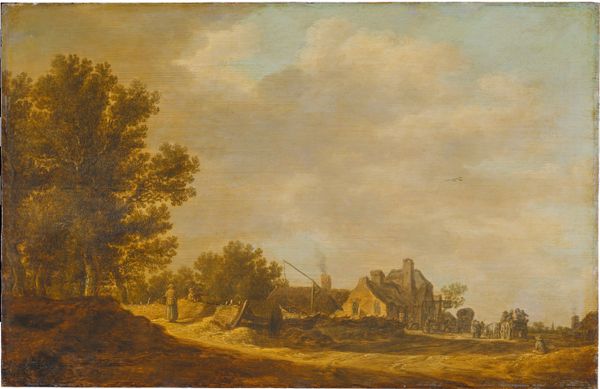
oil-paint
#
dutch-golden-age
#
oil-paint
#
landscape
#
figuration
#
oil painting
#
genre-painting
#
realism
Dimensions: support height 59.6 cm, support width 83.6 cm
Copyright: Rijks Museum: Open Domain
Curator: Pieter de Bloot’s "Country Kermis" from 1639—a bustling oil painting depicting a village fair. What strikes you about it? Editor: Chaos, almost joyful chaos! There's so much activity crammed into the canvas, but it still feels harmonious. It's got a gritty, lived-in atmosphere that I find deeply engaging. Curator: Yes, the seeming chaos speaks volumes, doesn’t it? The Kermis, or village fair, was a really important social event in 17th-century Netherlands, a brief release valve in often difficult lives. De Bloot, with his background in peasant genre scenes, captures the revelry well. He seems to revel in their earthy joy, even. Editor: Precisely. And I find myself wondering about access and who gets to participate. We have bodies in all positions—drinking, fighting, tumbling about on the ground—each embedded within a very specific social reality, made material through the touch of the brush and eye of the artist. Who gets excluded? Where are the people with disabilities or those who were socially disenfranchised at this moment? I wonder, was participation in events such as the Kermis shaped by early capitalist economic structures? Curator: Absolutely. These Kermis scenes, while seemingly celebratory, often mask social inequalities. Also, there are moral undertones, you see. There are frequent depictions of excessive drinking, lewd behavior… De Bloot gives us a sense of both the amusement and moral censure directed towards peasant life at the time. It’s a little sly, don't you think? Editor: The slyness is brilliant. He doesn't shy away from the messy reality, the contradictions inherent in these moments of collective release. There is an important social dialogue happening. The perspective is also very interesting; with what seems to be an absence of central organizing perspective that almost places you at eye-level into the context of the moment and time itself. Curator: It reminds us that even in revelry, societal structures are present. The composition guides your eye through various vignettes, almost like little stage plays, inviting you to become both an observer and participant. Editor: A complex mirror reflecting both our historical and our present selves. It makes me appreciate how little some things change—our human need for celebration and release is timeless, even when mediated by power structures and cultural narratives. Curator: A painting about the messy, joyful, complicated truth of being together. I always leave it pondering what 'freedom' really looks like.
Comments
No comments
Be the first to comment and join the conversation on the ultimate creative platform.
